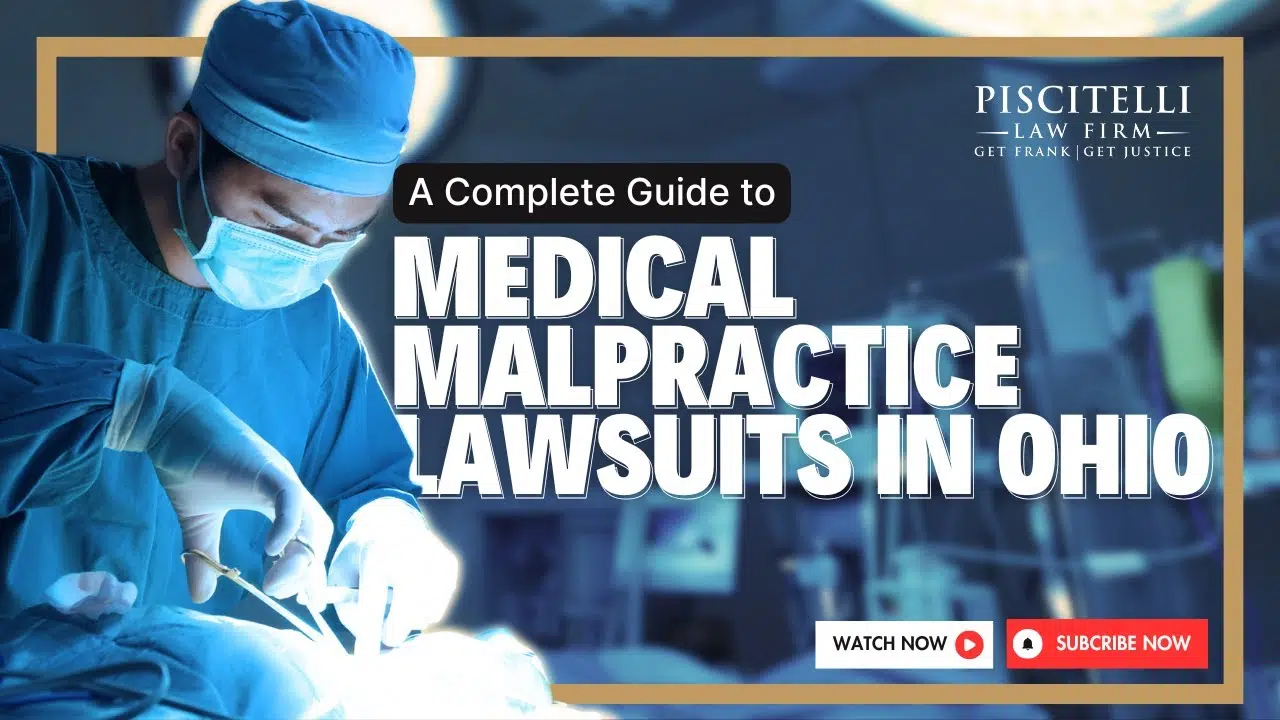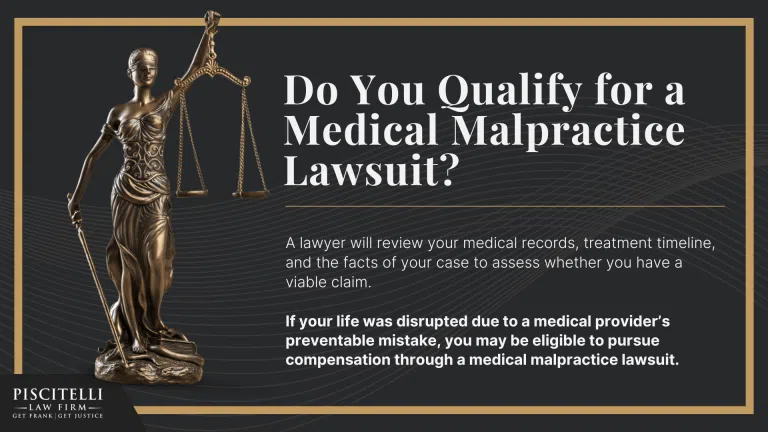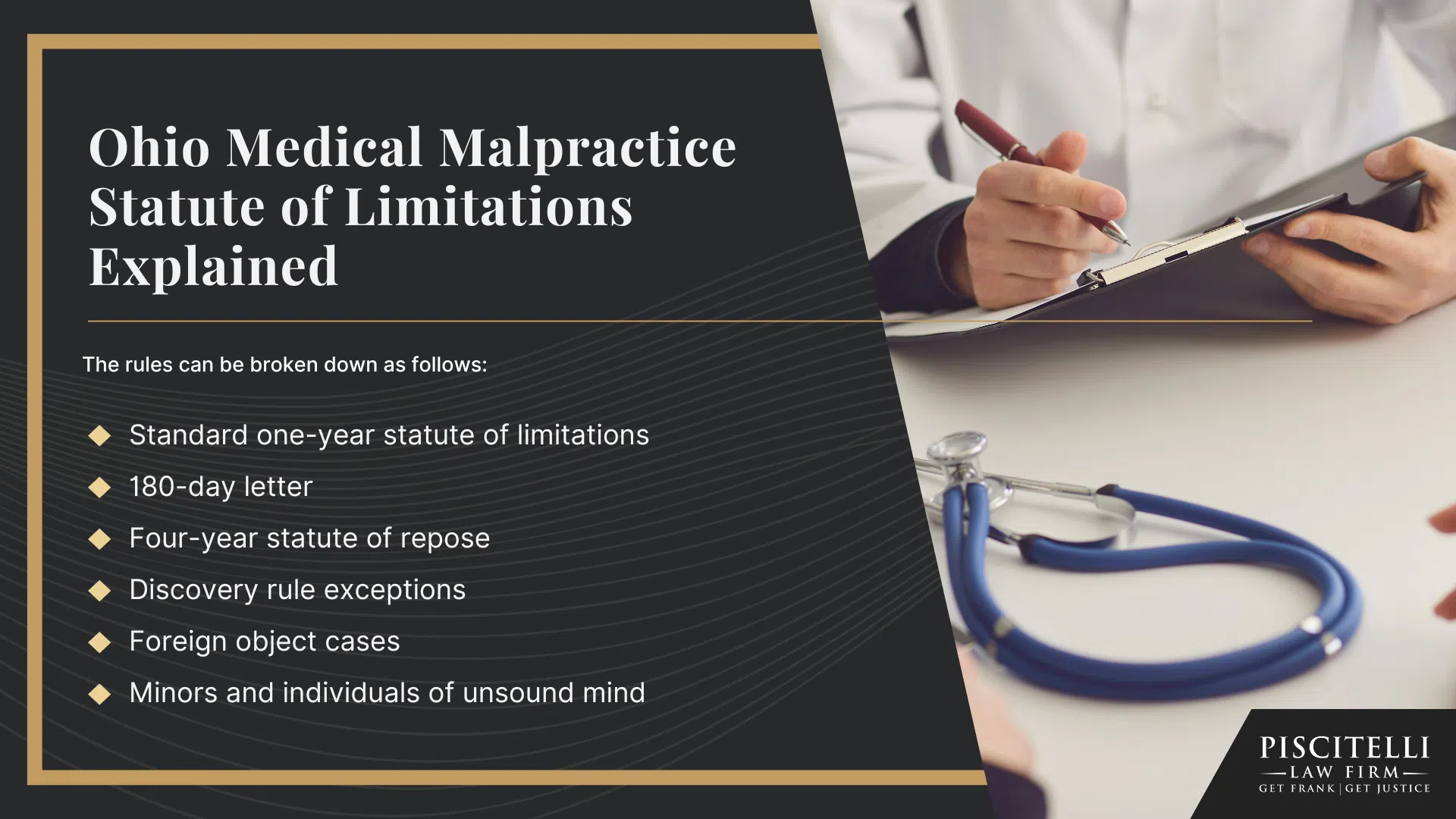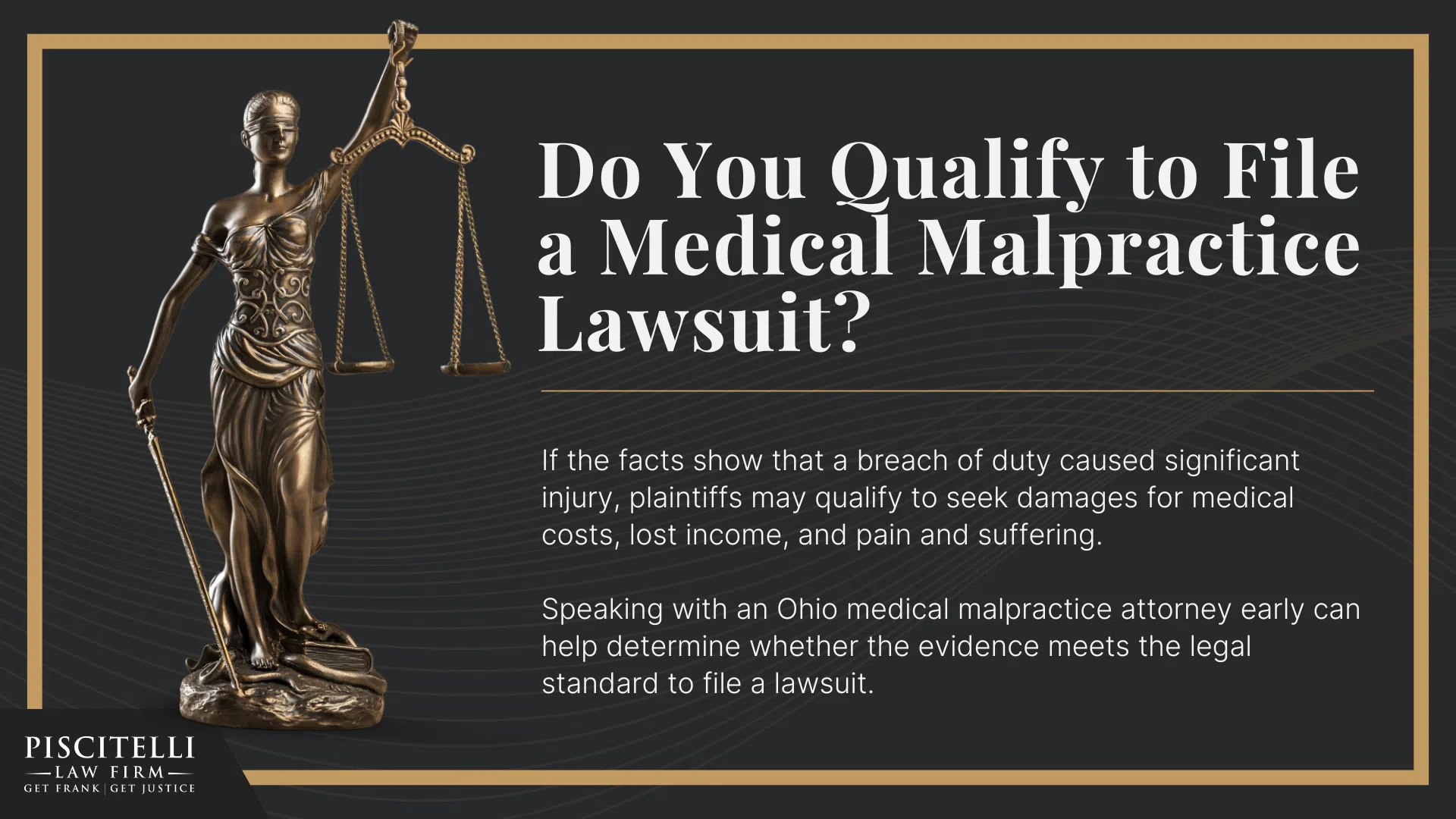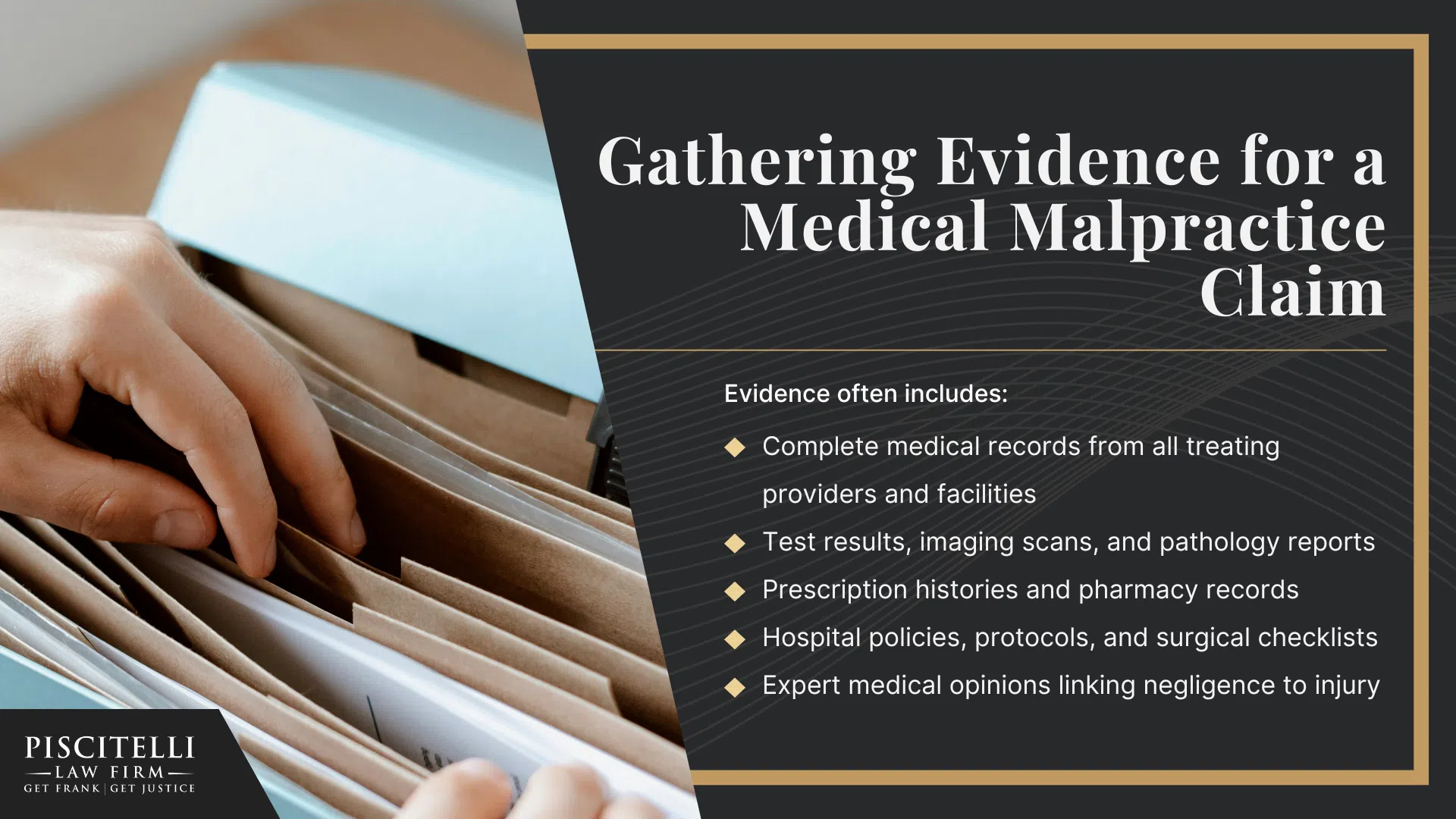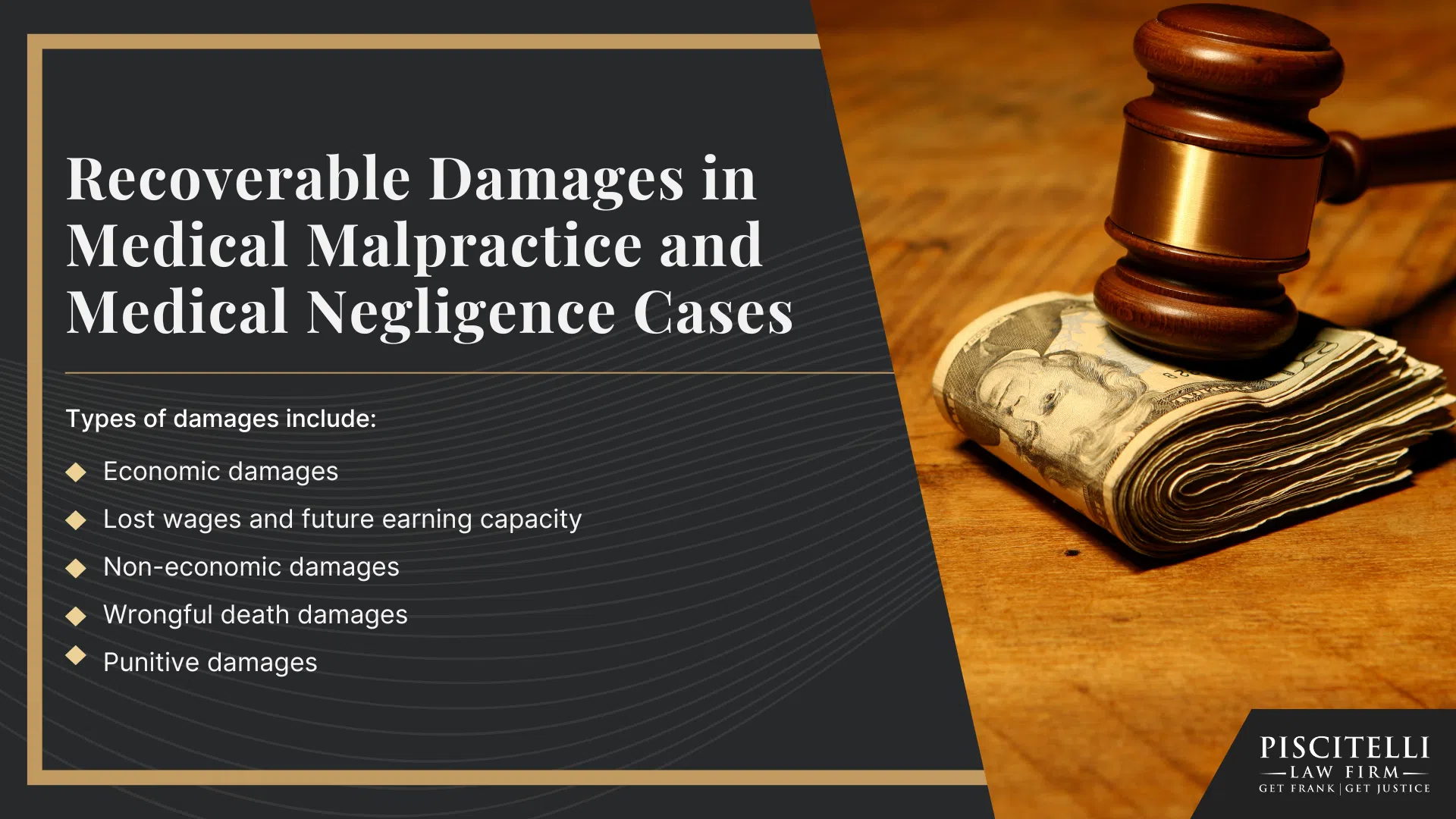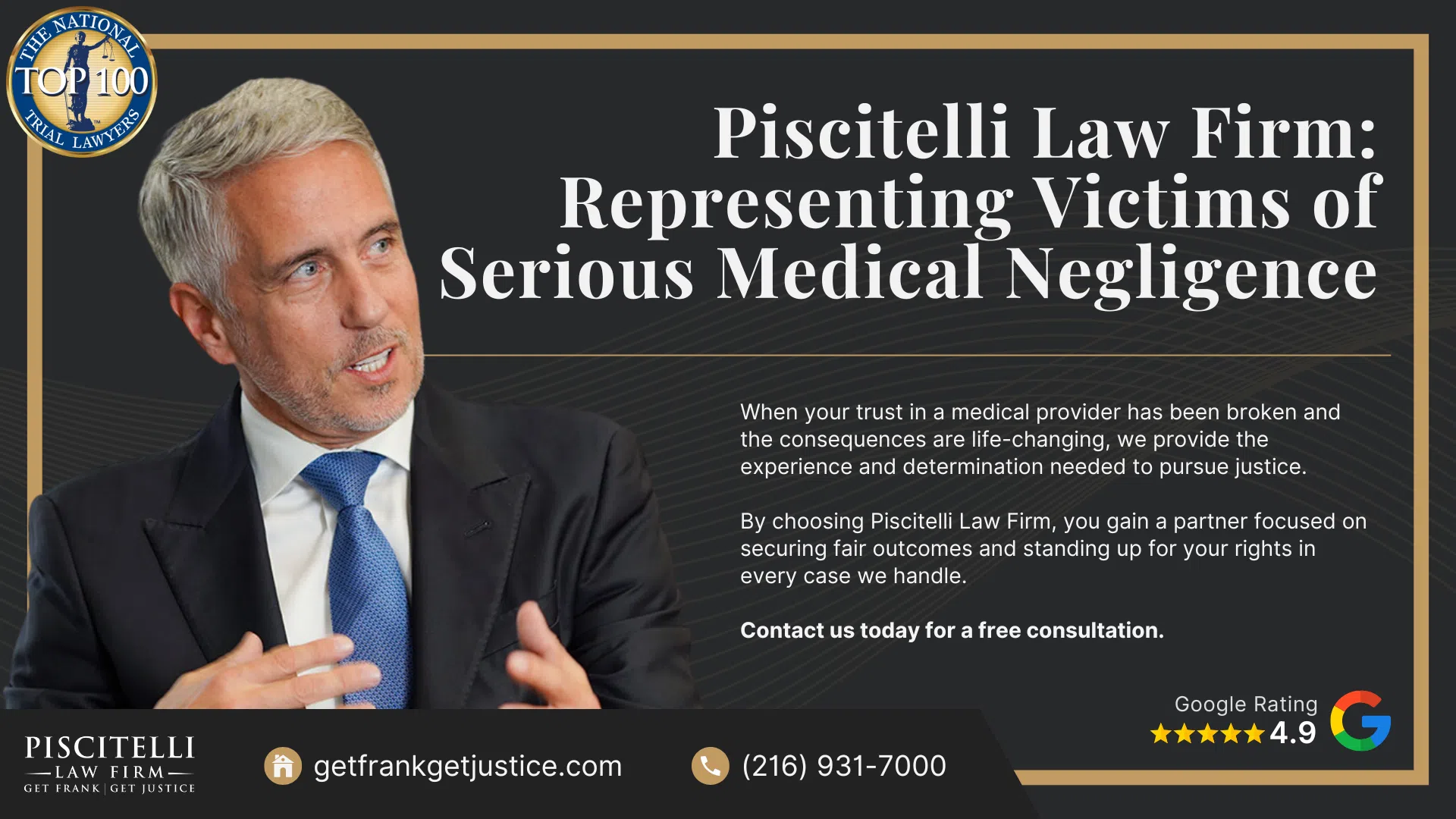Under Ohio law, medical malpractice is broadly defined as a personal injury claim arising when a medical professional fails to meet accepted standards of care and an injury occurred as a result.
These cases often center on whether the provider exercised the same level of skill and judgment another professional in the same field would have under similar circumstances.
When a medical error causes lasting harm, patients have the right to seek compensation through the Ohio courts with the help of an experienced medical malpractice attorney.
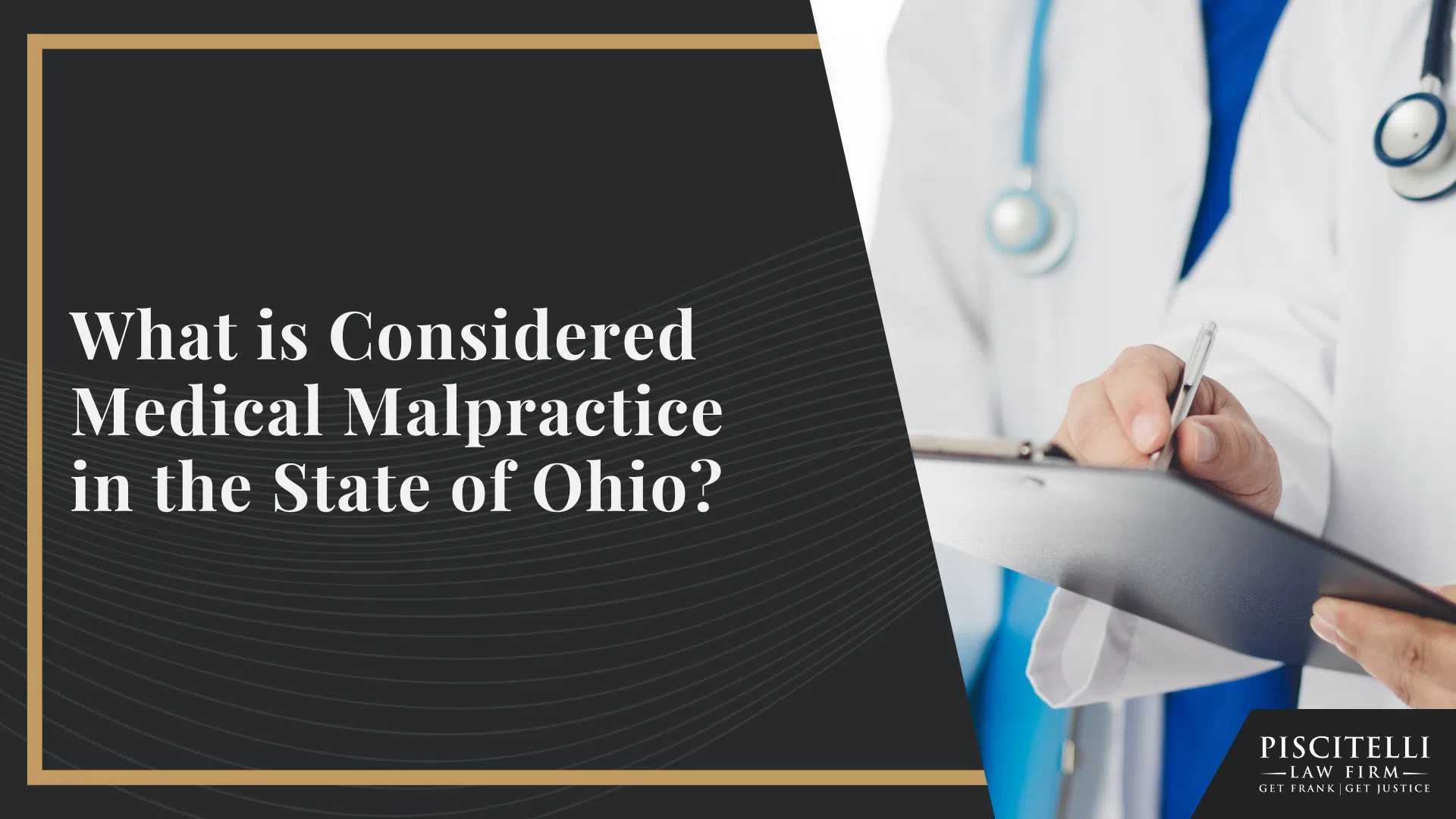
Medical malpractice can take many forms, ranging from surgical mistakes to failures in diagnosis and treatment.
In some rare cases, a foreign object left inside a patient after surgery leads to severe complications and extended suffering.
Birth-related injuries, delayed diagnoses, and improper medication decisions are also among the common grounds for filing these claims.
Ohio law recognizes that these errors can carry devastating consequences, and it provides a legal pathway for victims to file suit against negligent providers.
The definition of malpractice is not limited to clear mistakes.
It also includes situations where a doctor or hospital did not take reasonable steps to prevent foreseeable harm.
Victims may recover damages for both economic losses and the full extent of their pain, suffering, and long-term health problems.
By pursuing a claim, patients and families hold institutions accountable and send a clear message that negligent care will not be tolerated.
Examples of Medical Malpractice in Ohio
Medical malpractice takes many different forms, and the law in Ohio recognizes that negligence can occur in nearly every area of health care.
Some cases involve clear and preventable mistakes, while others arise from more subtle failures in judgment or communication that lead to serious harm.
Whether the injury occurred in an operating room, during childbirth, or in routine medical care, each scenario requires careful review of the facts and medical standards.
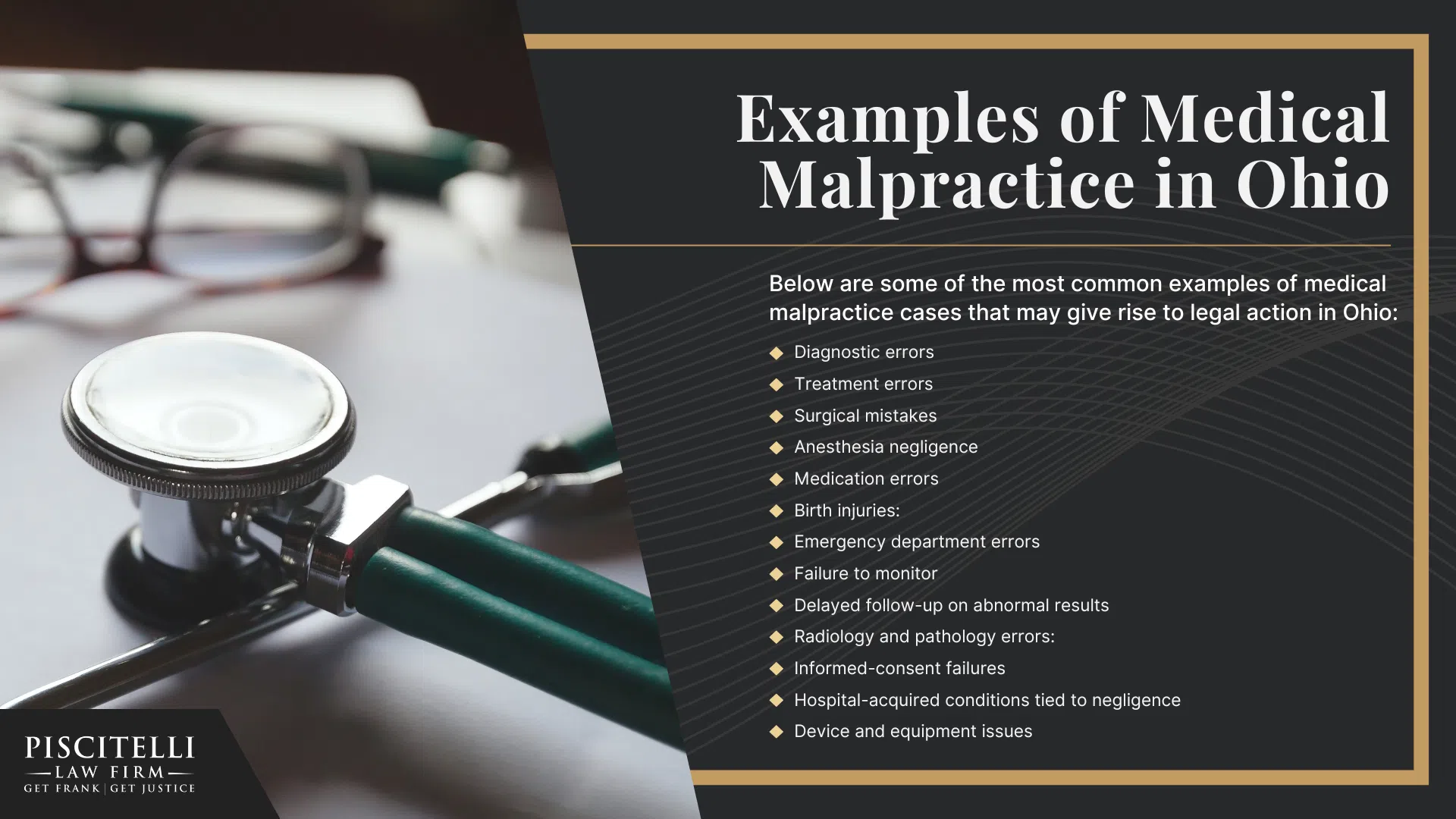
Below are some of the most common examples of medical malpractice cases that may give rise to legal action in Ohio:
- Diagnostic errors: missed, delayed, or wrong diagnosis that allows a condition to worsen or leads to harmful treatment.
- Treatment errors: choosing an inappropriate therapy when safer, accepted options were available.
- Surgical mistakes: wrong-site or wrong-procedure surgery; nerve or organ injury; foreign object left in the body after a procedure.
- Anesthesia negligence: improper dosing, failure to monitor oxygenation/ventilation, or ignoring known anesthesia risks.
- Medication errors: prescribing the wrong drug or dose, contraindicated combinations, or failures in medication reconciliation.
- Birth injuries: negligent prenatal care, failure to act on fetal distress, delayed C-section, improper use of forceps/vacuum, or unmanaged shoulder dystocia.
- Emergency department errors: triage failures, premature discharge, or ignoring “red flag” symptoms such as stroke, sepsis, or cardiac ischemia.
- Failure to monitor: not watching vitals, labs, or post-op status; missing deterioration that a prudent provider would have caught.
- Delayed follow-up on abnormal results: test findings never communicated to the patient or treating team, leading to preventable progression.
- Radiology and pathology errors: misread imaging or slides; failure to recommend appropriate next steps.
- Informed-consent failures: not explaining material risks, benefits, and alternatives a reasonable patient would want to know.
- Hospital-acquired conditions tied to negligence: preventable infections, falls, pressure injuries, or wrong nutrition orders due to substandard protocols.
- Device and equipment issues: improper placement of lines/tubes, unsanitary or malfunctioning equipment, or negligent maintenance.
How Ohio Law Defines and Limits Medical Malpractice Claims
While examples of medical mistakes help illustrate what malpractice looks like in practice, Ohio law sets specific rules that determine whether a case may proceed.
Under state law, medical malpractice is not established simply because a patient suffered a poor outcome.
Instead, the claimant must show that a medical professional failed to meet the accepted standard of reasonable care and that this breach directly caused the injury.
Establishing this connection almost always requires expert medical testimony.
Ohio courts also impose procedural safeguards that shape how medical malpractice cases move forward.
Every complaint must be accompanied by an Affidavit of Merit, a sworn statement from a qualified expert who has reviewed the records and believes negligence likely occurred.
Without this affidavit, the court may dismiss the case outright.

